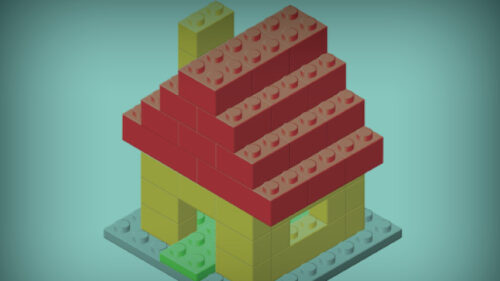I’m going to warn you upfront…what I’m about to say might get stuck in your head. Ever heard of the song “Lego House”? It’s by the popular English singer-songwriter Ed Sheeran. If you’ve heard it, you know some of the lyrics to the song go like this: “I’m gonna pick up the pieces and build a Lego house. If things go wrong, we can knock it down.”
Being 100 percent honest with you…in the design industry, this isn’t music to our ears!
The Holmes Murphy & Associates Architects and Engineers specialization team recently held our annual risk management/loss prevention seminar series over a 4-state region (in 9 locations and over 450 attendees). Our “Lego My Contract” workshop was a hands-on exercise in communication and contract negotiation while building a Lego structure with verbal instructions. We devoted time to building skills in understanding the client and the project so our client’s relationship doesn’t go sour.
Part of the reason we devote so much time to these type of workshops is that in a recent review of claims activity and contract reviews, our specialists exposed missed opportunities to improve communication in developing contract Scope writing that is fluid between the owner and the prime and sub-consultants. An important note to this is that XL Catlin Risk Drivers information reports that almost 40 percent of claims have their roots in poor project team and client communication. Communication is a key element that threads from design through construction completion to avoid misunderstandings. This is a crucial element. The following graphic explains some of these communications issues.
So what can you do to improve these risk factors for a more seamless project process? Focus on scope and communication!
Scope
When developing the scope of a project, design professionals must clearly understand the expectations. If there are none or are they are too broad, then it’s better to define scope by asking more questions. For example: What if a client communicates this: “We would like a design that evokes a sense of community and spiritual gathering”? What exactly does that mean? Well, as the design professional, you have to work on translating and defining that vision. A great way to do this that also gives you an opportunity to build on your client’s expectation is asking good questions and then developing a process to execute the right answers and solutions. If you aren’t sure what you should be asking, you may want to consider using something like our Holmes Murphy Project Evaluation Checklist. This checklist is an amazing resource that provides the guidance needed to determine what additional information should be uncovered to meet client’s expectation from the get go.
Communication
When it comes to communication, the simple rule is that you can never ask too many questions. Here’s what we’ve found out from many of our design professionals. Prime/architects rely on the sub-consultant to be knowledgeable from their experience for the needs of a project. But on the flip side, sub-consultants have told us they anticipate the prime/architect to be detailed regarding information they’ve acquired from the owner about the project or site.
Is the fee adequate based on the prime’s understanding of the owner’s expectations? Acquiring proposals from multiple sub-consultants may result in a comprehensive scope and accurate fee.
In the end, the key is to avoid having to say, “If things go wrong, we can knock it down.” While a catchy song, it’s not something we want to actually happen. Well before it gets to that point, reach out to our Architects and Engineers team with questions. We’re here to help with scope, communication, or any other questions you may have.







